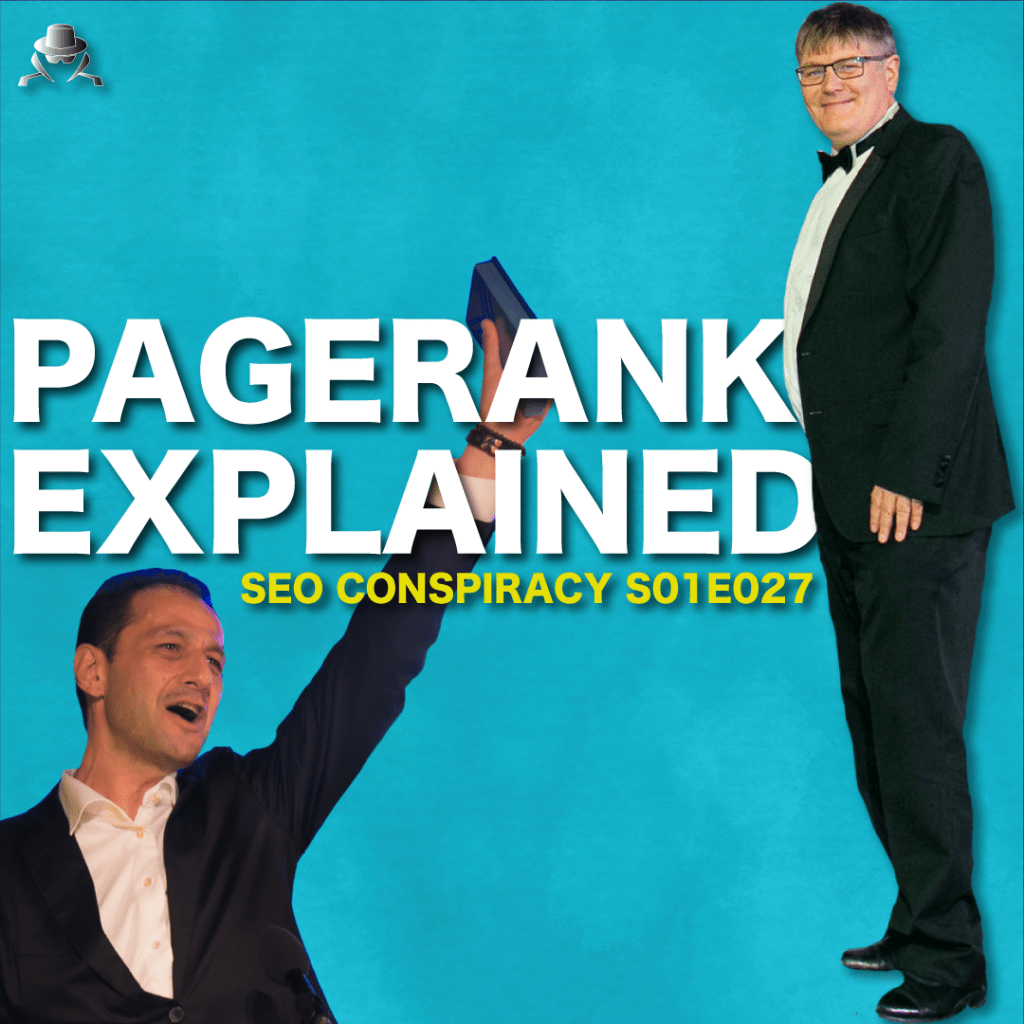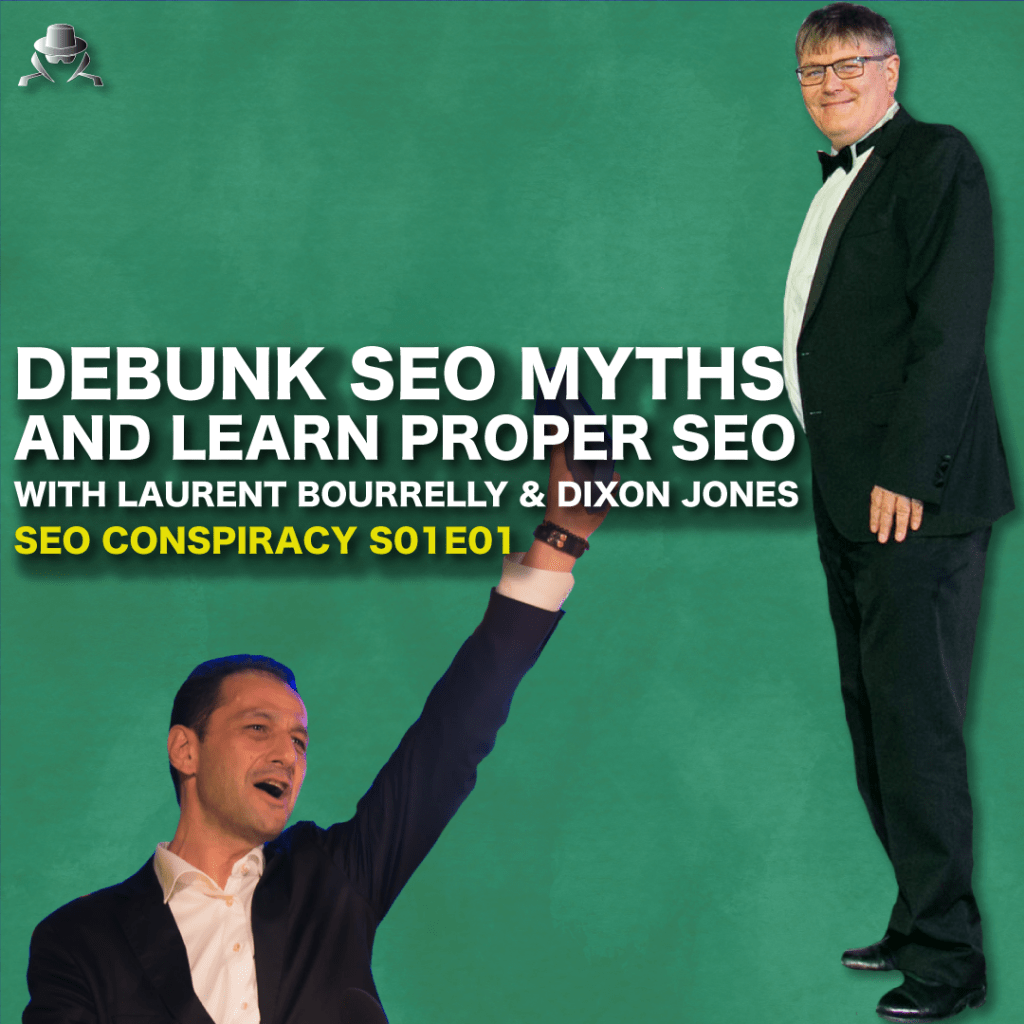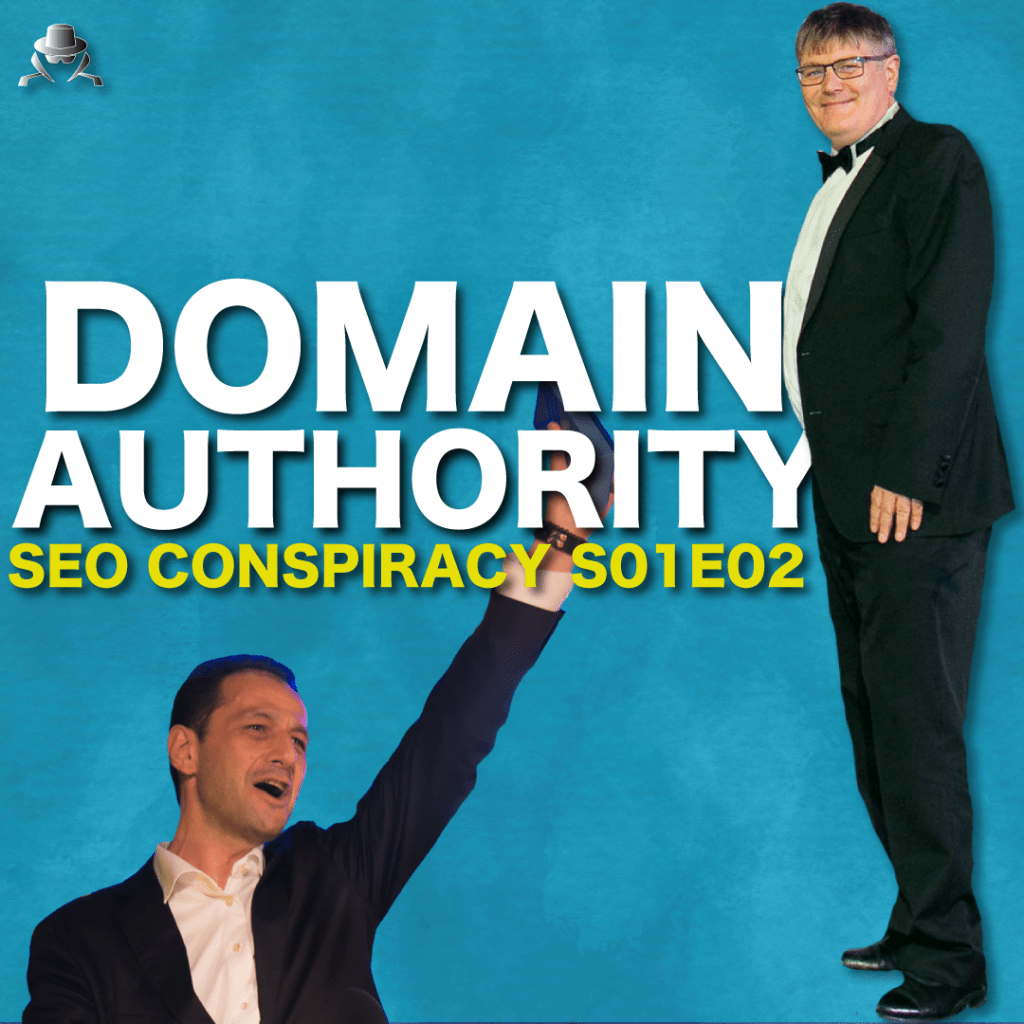Misconceptions of the concept of PageRank.
SEOCONSPIRACY S01E27
Dixon Jones is a PageRank specialist; he has done videos and spreadsheets to help people understand the original PageRank algorithm. You can see one of his presentations here:
PageRank explained by Dixon Jones.
The first thing is that the original PageRank algorithm is a long way in the past now.
But still, Google uses PageRank to this day. It’s just a question of how it has metamorphosized over the years.
But even the original PageRank algorithm, people really didn’t understand how powerful it was. I don’t think they understood the nature of the maths & how you cannot possibly look like a human being at one link on one page to another link on another page, and there’s no way that’s gonna past a lot of PageRank; because you didn’t know the relationship of the source page to the rest of the internet.
And understanding that element was very, very important.
Do you remember the Google dance days?
Of course, you do.
Everyone was sitting there on their computers with their 14K modems or 32K modems, watching our rankings go up and down.
And the little green bar in the Google toolbar to see if our PageRank went up or down.
It was a very public display of Google’s power.
To be honest, it was when Majestic really started to create the Citation Flow. It has a month-long calculation that it does in there as well. A whole month to do the maths, do you realize?
The interesting thing is that when you look at the whole math of PageRank, if you make an assumption of the value of every web page, maybe you say, “I’m gonna say that every web page is worth 1, let’s do the maths,” or you can say “every page is worth whatever number of links are coming into each web page, let’s do the maths.”
And you start with that assumption, and the algorithm just improves, improves, improves.
So I did an example where we started with a number of links coming into a very small internet, and then the links ran the algorithm again, again, again, and it turned out when we got to the end of it that the page that we assumed was the strongest page on the internet when it started because of the number of links going into it turned out it was one of the weakest by the way we’ve done the maths on the whole thing, and it is just not integrative at all.
And that’s even before they start to drop the PageRank or any changes that they made to beat the monthly update when the Google dance started as well.
I think it was a little bit later than the Florida update because I was in Florida when Florida was announced at the PubCon conference there.
Matt Cutts was there I remember, very early days, really for me, I think it was one of the first conferences I went abroad.
The topic sensitive page rank is a draft
The important thing is nobody knew about this Topic Sensitive or Topical. If you search the formula, look up Topical Page Rank
The topical page rank formula is the final version. But we didn’t see it; there was only a little green bar, ranking from 1 to 10, which was already a simplification because the PageRank was decimal, it was ranking 1, 2, 3, 4 or it could be 1.5 and 1.5 is not the same than 1.
There were a lot more pages with 0 than there was with Pagerank 9 or 10 but let’s go back to the first PageRank, the regular PageRank.
There is also a little note in the PR formula, which is the sum of the PR of all the pages on the web is equal to 1.
This means that the images you see or the balls of color pointing out with links to each other, that’s the usual image you see to illustrate the PageRank, is wrong in itself because where does that PageRank come from?
It’s, in fact, a common pot, it’s like the bitcoin, and then it goes from hand to hand.
I think if you add more pages into the pot, then each page was starting with a little bit, so the more pages.
If Google doesn’t see a link, now it can be an internal link; back in those days anyway, if Google couldn’t see a link to that content, then it probably didn’t know it was there; we didn’t have sitemaps at that time.
We didn’t have the methods of discovery, so it was pretty much-discovering everything trough the crawl until you link to that page. It didn’t carry anyway at all.
You need to seduce the Reasonable Surfer.
You also need to integrate the notion of the reasonable surfer.
If you can seduce the reasonable surfer, it’s gonna help out with bumping up your PageRank.
It makes the concept of PageRank still very valid, but it changes the maths so much.
My advice for people-watching is to look at it as a train. You will go up or down.
Watch your citation flow and trust flow: are they balanced?
If you have a very big citation flow, it’s a red flag. It means you got too many links of poor value.
The difference between TF & TTF of Majestic
Trust Flow is much more heavily weighted towards websites that we know are curated by human beings.
We also know what those sites are about such topical trust flow is a really good proxy for, what we assume, even though Google doesn’t show it, is topical page rank.
And topical trust flow is, I don’t think it’s anybody else on the planet that even starts with the topical trust flow or topical page rank in the way that majestic has tried to do.
Machine learning is running the show at Google.
Everybody forgets something, and we spoke about it last time, about machine learning, deep learning, or ai running the show at Google.
So everything needs to be organized on the page: that’s what Dixon is doing with Inlinks.
Around the page and within site, that’s my specialty, what I call the Topical Mesh and around the URL. I’m not saying around the domain. Remember, the web is page by page. Around the page, the surroundings of the page, meaning the backlinks. That smell, that footprint, the perfume.
The more we’re gonna go in time, the more it’s going to be premium ranking criteria, it doesn’t have anything to do with your content.
If the backlinks don’t have the right smell, you might rank but 48h later, you’re gonna be out, and I see more and more search engine result pages where all the TTF are aline, like very highly commercial, and after the may 2020 core update, nobody looked at it, I looked at it.
The queries I’m looking at years after years after years, more of then, are aline now.
It makes sense, everything needs to be at the right place at the right time, and everything needs to be aline. That’s what the algorithm wants.
It still works on certain queries where the power of the PageRank of the marketing push. It’s still too powerful to counterbalance what I call the smell of the SERP.
We know what it wants, everything in the right place, it wants that big Christmas tree that answers everything.
I also suspect that sometimes google can’t identify and underline the entity for the query. So when the query of the user doesn’t refer to and underlined entity or an entity that they can’t understand, then they probably refer back to some fairly traditional source of SEO.
And sometimes, it doesn’t have enough material to answer different types of intent.
To conclude, if you investigate a little bit of how the PageRank works and how especially you can play around with the reasonable surfer and send an outbound link that’s gonna come back to you, thanks to the reasonable surfer.
You can train Google bot that way; that should be your job.
Educate yourself about the page rank.
Watch the video:
Latest posts



